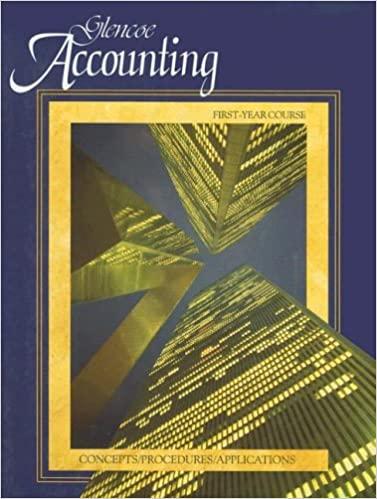Question
Cumulative Learning Curve The learning curveshows how the labor hours worked per unit as the number of units produced increases. The basis of the learning
Cumulative Learning Curve
The learning curveshows how the labor hours worked per unit as the number of units produced increases. The basis of the learning curve is almost intuitiveas we perform an action over and over, we improve, and each additional performance takes less time than the preceding ones. The states that the cumulative average time per unit decreases by a constant percentage, or learning rate, each time the cumulative quantity of units produced doubles. The percentage based learning rate gives the percentage of time needed to make the next unit, based on the time it took to make the previous unit. The learning rate is determined through experience and must have a range between 50 and 100 percent. A 50 percent learning rate would eventually result in no labor time per unitan absurd result. A 100 percent learning rate implies no learning (since the amount of decrease is zero). An 80 percent learning curve is often used to illustrate this model. This is possibly due to the original learning curve work with the aircraft industry found an 80 percent learning curve.
The cumulative average time and cumulative total time are easily obtained when the cumulative units produced are doubles of the prior cumulative number. For other values of cumulative units, the cumulative average time per unit can be obtained by using by knowing that the cumulative average-time learning model takes a logarithmic relationship:
Y = pXq
where
Y = Cumulative average time per unit
X = Cumulative number of units produced
p = Time in labor hours required to produce the first unit
q = Rate of learning
Therefore:
q = ln (percent learning)/ln 2
For an 80 percent learning curve:
q = 0.2231/0.6931 = 0.3219
So, when X = 3, p = 100, and q = 0.3219, Y = 100 3 0.3219 = fill in the blank labor hours (rounded to the nearest tenth). Thus, it takes 100 hours to produce the first unit, an average of fill in the blank hours to produce the first two units (fill in the blank total hours) and an average of fill in the blank hours per unit to produce the first three units (a total of fill in the blank hours for producing three units). The third unit, therefore, took fill in the blank hours to produce (210.6 160).
Applying the Concepts
Medcom Company installs computerized patient record systems in hospitals and medical centers. Medcom has noticed that each general type of system is subject to an 80 percent learning curve. The installation takes a team of professionals to setup and completely test the system.
Required:
1. Assume that the first installation takes 800 hours, and the team of professionals is paid an average of $50 per hour.Complete the following table for Medcom Company (round answers to one decimal place):
| Cumulative Number of Systems | Cumulative Average Time per System (in Hours) | Cumulative Total Labor Hours |
| 1 | fill in the blank | fill in the blank |
| 2 | fill in the blank | fill in the blank |
| 4 | fill in the blank | fill in the blank |
| 8 | fill in the blank | fill in the blank |
| 16 | fill in the blank | fill in the blank |
| 32 | fill in the blank | fill in the blank |
2. Using the data table above, calculate the total labor cost of Medcom installing four systems:
Total Labor cost (round to the nearest dollar): $ fill in the blank
3. Using the data table above, calculate the following for Medcom to produce a third system:
a. Cumulative average time to produce the third system (round to the nearest tenth): fill in the blank hours
b. Total time required to produce three systems (round to the nearest tenth): fill in the blank hours
c. Time to produce the third system (round to the nearest tenth): fill in the blank hours
Step by Step Solution
There are 3 Steps involved in it
Step: 1

Get Instant Access to Expert-Tailored Solutions
See step-by-step solutions with expert insights and AI powered tools for academic success
Step: 2

Step: 3

Ace Your Homework with AI
Get the answers you need in no time with our AI-driven, step-by-step assistance
Get Started


